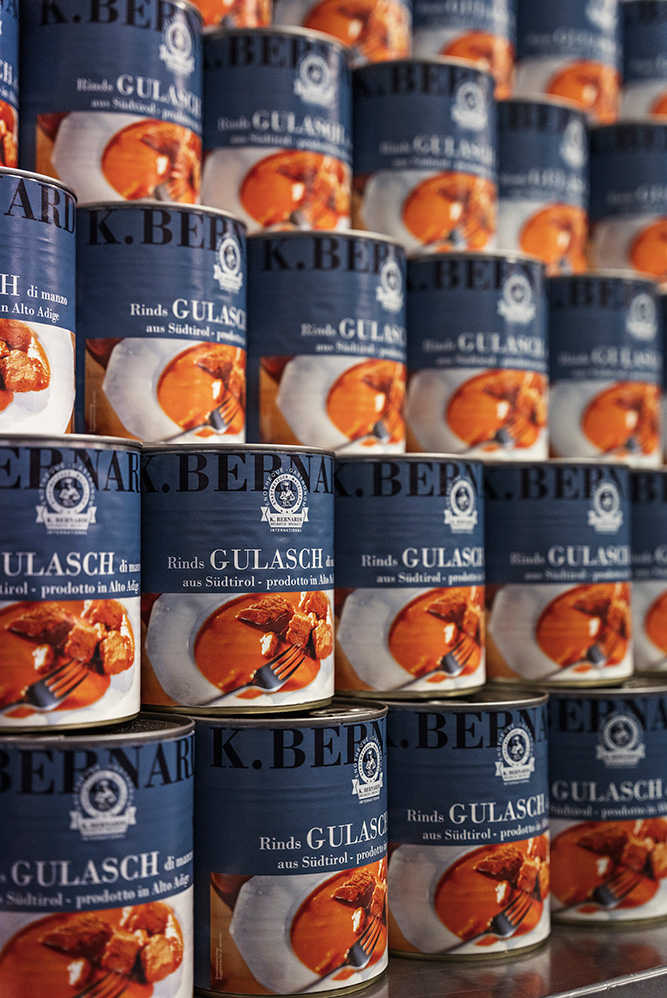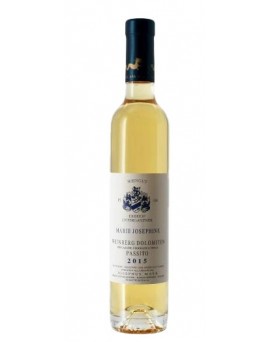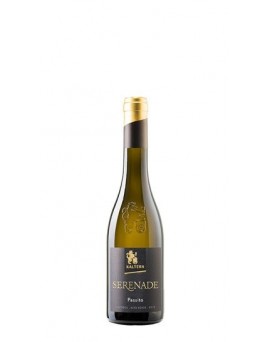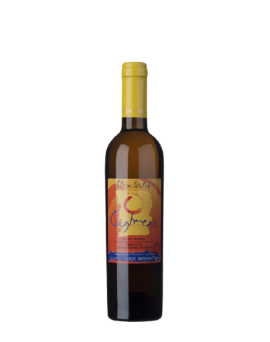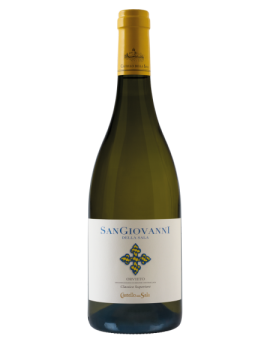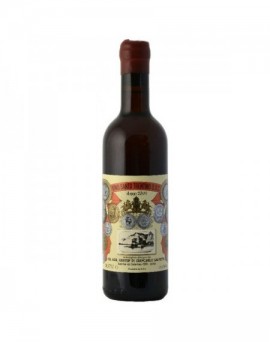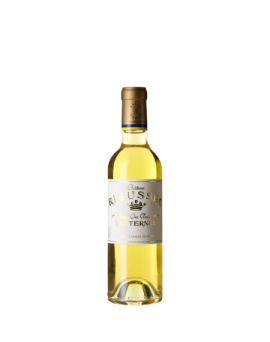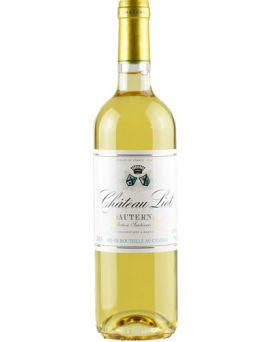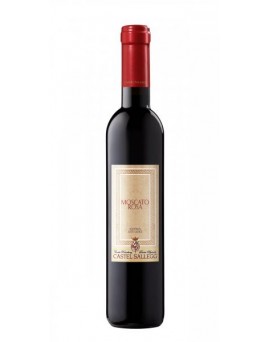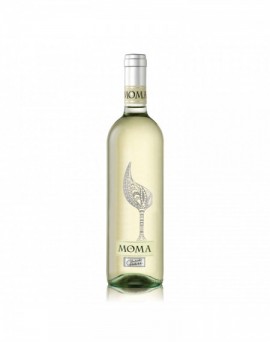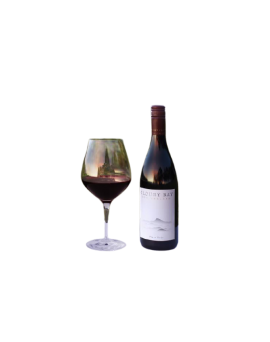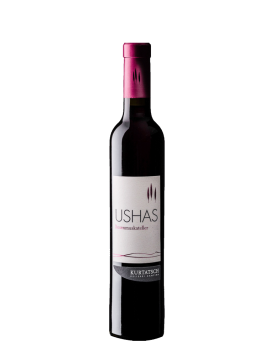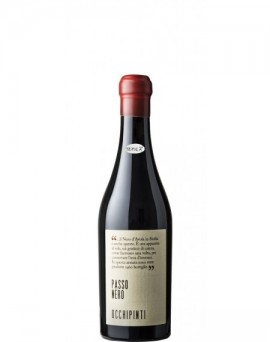Basket
0
Active filters
Gewürztraminer Passito DOP...
Vinification<br /><br />The grapes are harvested in September and left to dry for 4 months in a well-ventilated room. In December, the dried grapes are selected again. Drying results in a 2/3<br />weight loss, as well as a concentration of sugar, aromas, acidity and tannins. Due to the high sugar content, the yeast cannot carry out the fermentation completely and<br />thus a natural residual sweetness remains. After a fermentation of 6 weeks, a longer bottle fermentation takes place.<br />Tasting<br /><br />The 'Cashmere' Gewürztraminer Passito presents itself with a golden yellow colour with a light amber hue. Its bouquet is exquisite and intensely aromatic: dried apricots,<br />candied fruits, rose petals, a hint of orange and caramel. On the palate, the Passito is very concentrated, with a harmonious interplay between inviting sweetness and<br />refreshing acidity, elegant and of exquisite level.<br />
Price
€78.80
San Giovanni della Sala...
San Giovanni Della Sala<br />Orvieto DOC Classico Superiore<br /><br /><br />Climate: 2020 will be remembered as a tendentially dry year. The winter, almost completely devoid of rain, was dominated by temperatures that were not too cold. The<br />spring weather, which arrived slightly later than in previous years, was characterised by mild days and temperatures above seasonal averages, with the exception of a few<br />cooler periods at the beginning of April. Then, from June until almost mid-August, the warm and dry weather led to an early ripening of the grapes. A summer thunderstorm<br />towards the end of August refreshed the later varieties such as Grechetto and Procanico, ensuring that they reached a good degree of ripeness while maintaining freshness<br />and fragrance. The harvest of Grechetto, Viognier and Pinot Bianco for San Giovanni della Sala began around the last week of August and ended with the harvest of<br />Procanico towards the middle of September.<br /><br /><br />Vinification: on arrival at the winery, the grapes were vinified separately by variety to enhance the varietal characteristics. Part of the must underwent cold maceration,<br />remaining in contact with its skins for about 6 hours at a temperature of 10 °C, before being combined with the must obtained from the soft direct pressing of the grapes. The<br />must thus obtained was transferred to stainless steel tanks where alcoholic fermentation took place at a controlled temperature of 16 °C. The wine remained on its lees for a<br />few months to improve its structure, elegance and minerality until it was blended and bottled.<br /><br />Historical data: San Giovanni was born from the vineyards of the ancient Castello della Sala from the union of indigenous Grechetto and Procanico grapes with those of Pinot<br />Bianco and Viognier to tell the Orvieto Classico according to a new style. The first vintage of Castello della Sala Orvieto Classico was 1990.<br /><br />Tasting notes: San Giovanni della Sala has a light straw yellow colour with greenish reflections. On the nose, pleasant notes of tropical fruit combine with light mineral<br />sensations. On the palate it stands out for its balance between structure and freshness with good flavour and a pleasant persistence of yellow flesh fruit.<br /><br />Alcohol content: 12.0% Vol.<br />
Price
€18.00
Vin Santo 375ml SALVETTA 2009
Vin Santo<br /><br />Historical evidence tells of the existence of Vino Santo as early as the 16th century in the vicinity of Castel Toblino, and it is certain that a Vino Santo Puro was produced<br />from the Rauten vineyards in Sarche as early as 1825 (diploma Melbourne Australia 1880-1881).<br /><br />The ancient tradition, masterfully perpetrated up to the Salvetta brothers, comes back to life with the Salvetta Winery: the long and complex process leads to the birth of this<br />great meditation wine.<br /><br />Harvested late, in fact, the Nosiola bunches are left to rest in well-ventilated areas on the 'Arele', the racks on which the grapes dry naturally for several months, until they<br />are pressed during Holy Week, between March and April of the year following the harvest. The wine is then left to ferment and refine for five years in oak barrels and steel,<br />until bottling.<br /><br />The result is a sweet wine to be enjoyed at a temperature of 10 - 12 degrees, on its own or with dry desserts. The combination with blue cheeses and foie gras is<br />exceptional.<br /><br />The vintages currently being aged are those of the 2014, 2015 and 2016 harvests, while the 2009 and 2011 vintages are on sale.<br />
Price
€48.80
Ch. Rieussec 2006 375 ml
CHÂTEAU RIEUSSEC 1er Grand Cru Classé - Sauternes<br />Grape variety: Sémillon 90% - Sauvignon 7% - Muscadelle 3%.<br />Type of wine: white raisin wine<br />Vinification and aging: botrytized grapes - 8 weeks of harvest - fermentation in barriques - aging in new barriques 50% for 24 months<br />
Price
€70.80
Ch. Liot 2010 Sauthern VB
CHÂTEAU LIOT<br />Sauternes<br />Grapevine: Sémillon 80% - Sauvignon 15% - Muscadelle 5%<br />Type of wine: white raisin wine<br />Vinification and aging: botrytized grapes - fermentation in barriques - aging 6 months in barriques and 8 months in stainless steel tanks<br />
Price
€26.40
Moscato Rosa DOC 2016 375ml...
<br />South Tyrol Moscato Rosa DOC<br /><br />A rare pleasure in a small edition<br /><br />Castel Sallegg and Moscato Rosa. These two terms have long belonged together in South Tyrol. Not without reason, it was the Princes of Campofranco, ancestors of the<br />current owner Count Georg von Kuenburg, who in 1892 brought this noble grape variety with them when they moved from Sicily to Sallegg Castle in Caldaro and planted it in<br />the warmest soil on Lake Caldaro, where it thrived magnificently. Today, the rose muscatel is one of the rarest varieties in the world. The Moscato Rosa of Castel Sallegg<br />grows at the Seehof in St. Josef am See at 230 m above sea level on the traditional pergola.<br /><br />The production of this wine is very limited: Depending on the weather, Moscato Rosa may not be bottled at all in certain years. Otherwise, up to 1,000 bottles are bottled per<br />vintage.<br /><br />Tasting Notes:<br />A dessert wine whose colour is characterised by a dense raspberry red.<br />On the nose, rich aromas of roses, fine fruit components distantly reminiscent of lychee and ripe, very complex raspberry flavours, supported by an elegant spiciness in the<br />background.<br />Very opulent, repeating the aromas of the fragrance, this powerful wine type presents itself on the palate.<br />Serving temperature: 10-14°C<br />Shelf life: Up to 30 years. Moscato Rosa is Castel Sallegg's most famous wine and, as a variety, is one of the rarest in the world.<br />Food recommendation: Ideal with mature, spicy cheeses, foie gras, desserts with berry fruits (but with sugar restrained). Also perfect as a stand-alone wine in the sense of<br />a meditation wine.<br />Grape variety: 100% Moscato Rosa - Selection Kuenburg: Autochthonous variety.<br />Site: Kaltern - Seehof: 230 m above sea level. Gravel and reddish, ground Grödner sandstone. Warm, air-permeable soils with a special microclimate in the immediate<br />vicinity of Lake Kaltern.<br />Growing system: Traditional pergola<br />Yield per vine: 0.5 kg - 8 hl/ha due to natural trickling.<br />Vinification: The grapes are harvested very late with a minimum gradation of 32°KMW (160 Öchsle). This is followed by a week of maceration in stainless steel tanks.<br />Maturation: 1 year in stainless steel barrels, followed by 12 months in the bottle.<br />Alcohol: 11 ,7 %<br />Acidity: 7,4 g/l<br />Residual sugar: 180,8 g/l<br />
Price
€47.00
Moma 2020 Trebbiano...
MOMA BIANCO<br /><br />Tasting notes: intense, persistent with fruit notes of pear and apple. Elegant, tasty and harmonious.<br />Ideal temperature: 8/10°.<br />Food pairing: perfect with antipasti with fish as well as first courses, grilled fish and fresh, creamy cheeses.<br /><br />Organoleptic description: three grape varieties, one autochthonous - the Trebbiano - and two international - Sauvignon and Chardonnay - make for a unique wine. Three<br />perfectly balanced elements guarantee a fine and at the same time resolute result.<br /><br />Appellation: Trebbiano Chardonnay Rubicone IGT<br />Grape varieties: Trebbiano, Chardonnay, Sauvignon<br />Alcohol content: 13 % vol.<br />
Price
€14.30
Pinot Noir Cloudy Bay 2017...
<br />The elegant Marlborough red<br /><br />A balanced and lively expression of Pinot Noir from the Marlborough region.<br /><br />The 2017 growing season began with ideal spring conditions; warm temperatures and few frost events encouraged good canopy growth. Settled weather over flowering led to<br />high potential crops, fruit thinning was widely employed to reduce yield and achieve optimum vine balance. Fastidious canopy management throughout the mild and sunny<br />growing season ensured fruit developed, then ripened, at an ideal rate. The excellent weather during the ripening season was interrupted by rain events during the harvest.<br />The single-minded quality focus of the viticulture and winemaking teams, with hour by hour assessment, led to optimum picking decisions. Our low-yielding, early-ripening<br />vineyards with their open canopies, stood us in good stead in what was a tricky vintage across Marlborough and New Zealand.<br /><br />Nose: Appealingly aromatic, the 2017 Pinot Noir reveals notes of Morello cherry and bramble.<br />Palate: Fine, silky tannins and juicy acidity provide an elegant structure, with complexity coming from gentle toast and.<br /><br />Harvest:<br />We hand-picked the Pinot Noir from March 24th until April 11th, at a point of excellent flavour concentration and acid balance.<br />Vinification: The Pinot Noir fruit was all de-stemmed before being gravity fed into the open topped fermentation vessels. The grape skins were gently plunged with an average<br />of 18 days skin contact. After fermentation the wines were matured in French oak for 11 months, of which 35% was new. Final analysis of our 2017 Pinot Noir shows a pH of<br />3.57, TA of 5.74 g/L and an alcohol of 13.4%.<br />Alcohol 13.4 %;<br />Vintage 2017;<br />pH 3.57;<br />Varietal Pinot Noir;<br />Harvest Friday, March 24, 2017 to Tuesday, April 11, 2017;<br />Residual sugar 2.0 g/L;<br />Acid 5.7 g/L;<br />Closure Screwcap.<br />
Price
€45.50
Rosenmuskateller Ushas 2017...
In South Tyrol, only ten hectares are planted with Rosenmuskateller. The vine has very high demands.<br /><br />Grape variety: Rosemuskateller<br /><br />Vinification: Late harvest of the Rosemuskateller with possible air-drying. Fermentation in stainless steel, final fermentation in used barriques with long maceration, ageing<br />for 10 months in used barriques.<br />Alcohol: 12.5 % vol.<br />Total acidity: 6.8 g/l<br />Residual sugar: 195 g/l<br />Yield per hectare: 20 hl<br />Optimal drinking maturity: 2-10 years<br />Method of cultivation: sustainable<br />Bottle size: 0,375 l<br />
Price
€36.40
Passito Passo Nero 2013...
Format: 50 cl<br />Country: Italy<br />Region: Sicily<br />Vine: Nero d'Avola<br />Soil: Sandy of calcareous nature<br />Extension of vineyard: 0.5 ha<br />Type of planting: Guyot and Alberello<br />Density of vines per hectare: 6,000<br />Average age of vineyard: 35 years<br />Average production per ha 35 hl<br />Vinification and ageing: Crushing and destemming, maceration on the skins and spontaneous fermentation in 85 hl cement vats for 7 days with daily pumping over and<br />punching down. Devatting and ageing in 750 l tonneaux for 16 months.<br />Total sulphur dioxide: 45 mg/l<br />
Price
€41.40

